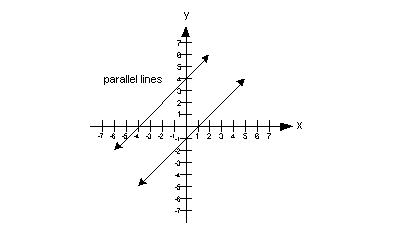The slope of a perpendicular line is the "Negative Reciprocal" of the positive line. Example= The slope of a line is 3/8. The "Negative Reciprocal" of this line is -8/3. This will create the 90 degree angle needed for the name of a perpendicular line.
The slope of a parallel line is the same as the original line. The only difference is the B, or the starting point. Example: A line has the slope of 4/5. It's equation is Y=4/5X + 5. A parallel line will have the slope of 4/5X, but it will have a different starting point. This Line's equation is 4/5X + 2. That way they will never intersect.
To find the slope of a line, do the equation of Y1-Y2
X1-X2.
For Example, -1,-2 and 2,2 are the points of this line. It's important to remember that X comes before Y. so, -2 -2= -4=
-1 -2= -3 -4/-3, or 4/3 since they were both negative.
QUIZ
1. what is the slope of a perpendicular line if the positive line has a slope of 4/5?
2. what is the slope of a parallel line if the other line has the slope of 2/3 and starts at -4?
3. what is the slope of a line if it has the points 2,3 and 6,7?
ANSWER KEY
1. The slope is -5/4, because -5/4 is the Negative Reciprocal of 4/5
2. The slope is 2/3, and it starts at any other number than -4, otherwise the lines will not be parallel.
3. 3 - 7= -4, 2 - 6= -4, so the slope of the line is 1. It starts at 1, but that is irrelevant.



No comments:
Post a Comment